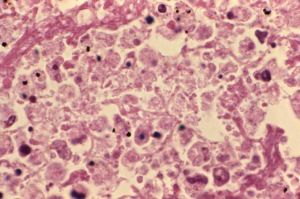News
Denmark has one of highest rates of Legionnaires’ disease in the EU
This article is more than 4 years old.
According to the State Serum Institute (SSI), 39 people died from the illness last year – the highest figure in recent times

A nasty lung illness (photo: Picryl.com)
According to the State Serum Institute (SSI), Denmark has one of the highest rates of Legionnaires’ disease in the EU.
The figures showed that there were 278 cases of the severe lung infection illness Denmark last year – lower only than Italy and Slovenia in terms of infections per capita.
The development represents a 25 percent increase compared to the average number of cases recorded over the last three years.
The numbers also revealed that 39 people died from the illness in Denmark in 2020, which is the highest number in recent times.
Of the 278 cases registered, 165 involved men (aged 26 to 96 years) and 113 related to women (aged 25 to 99 years).
READ ALSO: Traffic noise increases the risk of dementia
Old cisterns and alcohol
SSI has set up a working group to try to clarify the reasons behind the increase, as well as its geographic prevalence.
Because another enigma relating to the illness is that the problem is greater in certain areas of the country – and Copenhagen isn’t one of them.
For instance, Kolding, Hørsholm, Læsø, Randers and Nordfyns municipalities had the highest rates of infection in the nation.
According to Hans Jørn Kolmos, a professor of clinical microbiology at the University of Southern Denmark and Odense University Hospital, the situation is undoubtedly due to the obsolete Danish hot water supply systems.
Moreover, the WHO has found that regular alcohol consumers are the most likely to contract and grow the bacteria in their bodies.
In 2016, researchers from the University of Washington found that Denmark had the highest number of alcohol consumers, with 97 percent of men and 95 percent of women reportedly drinking regularly.
Infection usually occurs when inhaling water mist (aerosols) that contain legionella and it is assumed that most people in Denmark are infected in the shower.










































